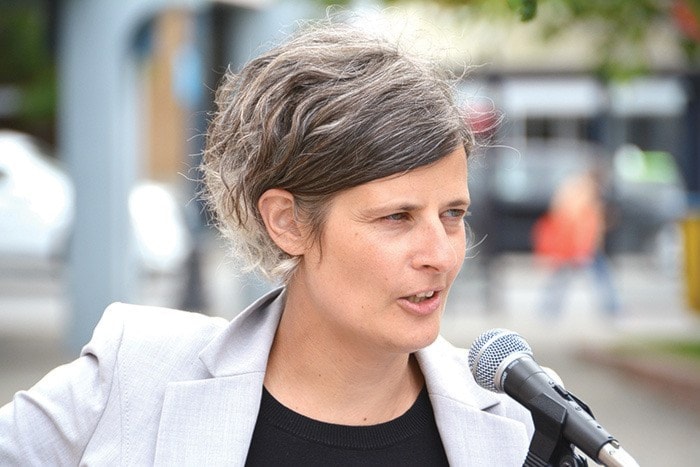It’s a plan Victoria Mayor Lisa Helps calls radically exciting and awesome.
For several years, the City of Victoria has been trying to solve the issue of homelessness, but now the Capital Regional District (CRD) is taking the lead on what Helps views as a regional issue.
A total of $60 million is being invested into a regional housing program to build up to 880 units of low-cost housing over the next five years. It’s an investment that makes Helps feel excited and relieved.
“There has been housing by providers, but this is the biggest influx of cash our region has ever seen and it’s the first time we’re all working together to build the housing,” said Helps, who wants the federal government to bring another $30 million to the table.
“I’m very optimistic we’ll see that.”
Last December, the CRD board approved borrowing up to $30 million to create the Regional Housing Trust Fund (RHTF) through which it will contribute to the capital costs associated with building affordable housing to address the needs of people experiencing chronic homelessness in the region.
Five months later, the province agreed to match $30 million to the RHFP. Island Health also jumped on board, agreeing to align its existing mental health and substance services with new affordable housing opportunities.
Earlier this week, the Greater Victoria Coalition to End Homelessness released its five-year community plan, which will guide investments made through the RHTP.
The community plan includes three phases. The first phase will focus on recommendations from the Process Mapping Project (which examined and mapped the journey of people trying to access the housing and health/social support system) and the coalition’s priority one task force, which focused on those having difficulty in the existing health, social services and housing system.
Approximately 74 people have been identified as experiencing chronic homelessness and having additional or other needs.
“If you are a homeless person looking for housing it’s almost impossible. You have to take so many twists and turns. It’s really ineffective as a housing ecosystem,” said Helps, who is also the co-chair of the coalition and has been involved with the community plan since the beginning.
“It (community plan and regional housing first program) aims to make improvements to the housing ecosystem and to build much needed new housing.”
The community plan includes: housing 175 people experiencing chronic homelessness in existing supportive housing, creating 133 units of new-build supported housing for the chronically homeless and creating 133 units of new-build affordable housing for people who want to exit existing supportive housing and need access to affordable housing to do so.
It also calls for a youth task force with a particular focus on low-barrier youth housing, and for a special effort be made to identify an opportunity for aboriginal housing and support services.
According to Helps, the next step is getting the money out the door. Once the CRD proposal — which calls for more than 440 units of subsidized housing and 440 market rental units be created — has gone through the CRD board on Sept. 14, requests for expressions of interest will be made to the building industry.
“The next step isn’t to do more studying, it isn’t to go around in circles, it’s to get the money out the door and build housing,” said Helps, noting a count the coalition did in February found there were 1,347 people in the region who are currently homeless. An estimated 367 to 479 people are experiencing chronic homelessness.
“So 880 units isn’t quite there yet, but there are of course other initiatives going on to help address the 500-person gap. This will make a huge dent and it will have a huge impact and we really need the federal government to come to the table not only in Victoria, but across the country to make homelessness a thing of the past in Canada.”
During the past few months, the province has managed to house more than 300 people in Victoria, including a number of those who lived in a homeless camp for nearly a year on the lawns of the Victoria courthouse.
